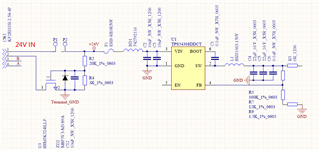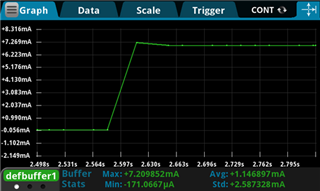The main schematic is as below , P1 ,& P2 is the two pad for me soldering a mechanical bottun. The normal power on current meassured with DMM6500 is 7~9 mA , The question is when I quickly switch the bottun on and off , there will be big probability that the fuse(F1) is burned out. Is it because there is the big current flow through VIN of TPS54308 at the swtich on moment or something?
But when I made the F1 in serial connection with DMM6500 to try to measure the peak current , the phenomena is no longer show up again.






